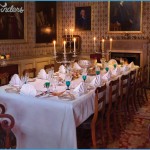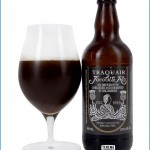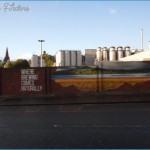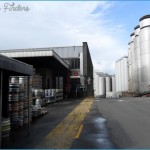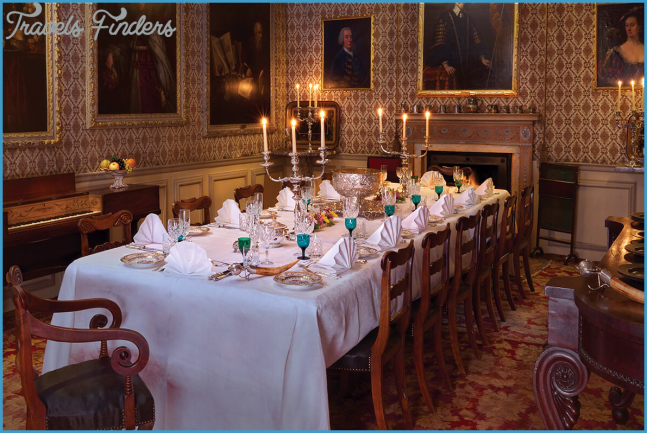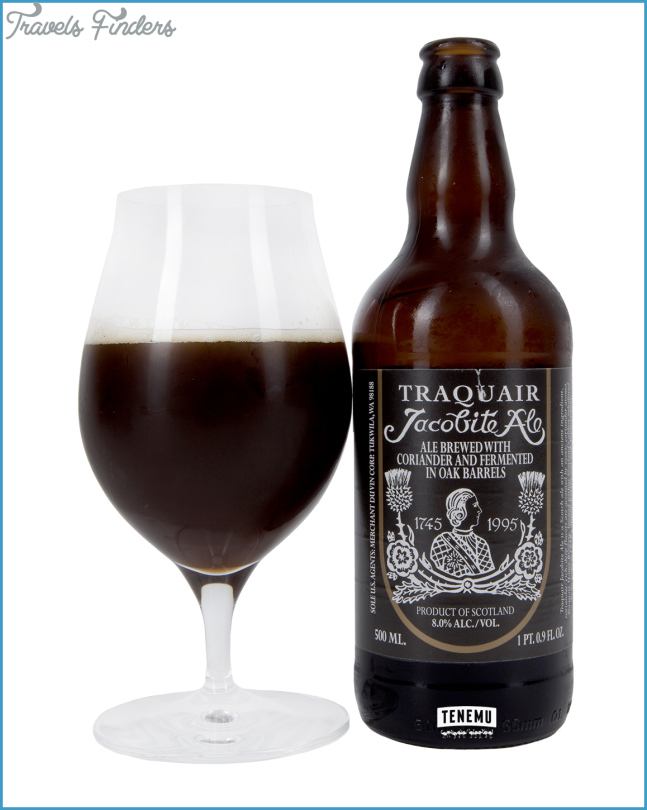Traquair House, which was used as a hunting lodge for kings and queens 900 years ago, is Scotland’s oldest inhabited house. The house has been in the Stewart family since 1491 and Catherine Maxwell Stewart is the 21st Lady of Traquair, living in the house with her family and being very active in telling its story—particularly the brewing side of things.
As was common centuries ago, large private houses had small personal breweries. Brewing took place in the Traquair kitchen until a more substantial brewery was added to what is the “newest” part of the house, built in 1694. There are still receipts in the house’s inventory for the original 200-gallon (7.7bbl) copper, dating from 1736, plus wooden fermenting vessels made from Russian Memel oak. It’s a substantial size for a domestic brewery, but notes from the time explain how a strong dark beer and a small table beer were brewed for consumption by the house and surrounding estate staff, which numbered around 30 to 40 people, with some of the staff also partly paid in beer.
Visit To Traquair House Where They Still Brew With Equipment From The 18™ Century Photo Gallery
In the early 19th century, brewing stopped. A combination of new beer taxation and the increasing scale of commercial breweries meant the private brewery was no longer viable and the old brewing wing on the side of the house became a junk room. But not just any junk room; there was so much stuff stacked in the old brewery that it remained undiscovered for 150 years—a couple of Lords down the line from the brewing days literally had no idea there was even a brewery in the house. It wasn’t rediscovered until 1964 when the 20th Laird, Peter Maxwell Stewart (Catherine’s father), found it while preparing to open the house to the public. And what he dug out from under the junk was remarkable: the old copper, the oak fermenters, the original mash tun, a flat cooling tray, and all the brewing equipment—it’s surely the best-preserved brewery of its age anywhere in the world.
Peter could’ve cleaned it up and simply left it on display, but thanks to his entrepreneurial brother they decided not to do that: they decided to brew beer with it. They spoke to Sandy Hunter from Belhaven Brewery and together they brought the equipment back to life and developed a recipe for a traditional, strong Scottish ale, the kind that would’ve been drunk when the domestic brewery was active. And in 1965 the first batch of beer—brewed with the original 18th-century equipment—was released in bottles.
They continued to brew using the old mash tun and copper until the 1990s, when they added a new brewhouse next door, but they’ve always fermented their beers in the oak barrels, more recently also adding two additional Canadian oak vessels (there’s no discernible difference in the taste of beer from the Russian and Canadian fermenters). And it remains a proper old-school brewery: Frank Smith, the brewer, told me they only have one push button that turns a pump on or off, while temperature control involves opening’ a window or turning the heater on. Wonderfully, they also continue to use the 18th-century copper for occasional special brews.
As for processes, the beers are brewed with soft natural spring water from the house’s estate, plus British malts and East Kent Golding hops. The beer has its fermentation in the oak barrels (the smell in that room is incredible: raisins, leather, stewed plums, old wood), then moves into larger conditioning tanks where it’ll stay for six to eight weeks. The beers are bottled and pasteurized off-site and then returned to the brewery (it’s been done this way ever since the first brew in 1965).
Traquair House Ale is the classic beer, rather similar to the kind of beer brewed there 300 years ago, and regarded as the beer style-guide defining example of a Scottish Ale. It’s red-brown and 7.2% ABV; there’s a deep raisin quality, some toasted malt loaf, and vanilla, but it’s not shy with bitterness. There’s a definite house taste, an earthy-woody quality beneath all the sweeter malts.
Jacobite Ale is inspired by an old recipe and uses coriander seeds. It’s 8.0% ABV and dark brown, there’s caramel, cola, and a real depth of dark malts which mix with a spiciness, some licorice, the floral coriander, and dry oak to give something almost medicinal—like a bitter, non-sweet root beer, which is also akin to whisky.
Bear Ale is a 5.0% ABV, amber-brown Bitter with some tangy, toasty malts and the floral and earthy depth of East Kent Golding hops. The name refers to the Bear Gates at the house, which were built at the end of the long driveway in 1739. Following a visit from Bonnie Prince Charlie in 1745, the 5th Earl closed the gates and promised that they’d stay shut until the Stuarts returned to the throne. The “Temporary Drive” has been used ever since.
Unlike many spurious marketing campaigns trumpeting a brewery’s heritage, Traquair House Ale offers you a genuine example of history in a glass.
In 2015 Traquair House celebrated the 50th anniversary of the brewery —something’ only a few other breweries will achieve in this decade. It’s a remarkable brewery to visit, especially to see those old oak fermenters; they are one of the finest and rarest sights in the beer world and produce a truly classic Scottish beer—a beer that tastes of history.
The Lowdown
WHAT: Traquair House
HOW: The house is open to visitors from 1 April until the end of October. You can tour the house, gardens, and maze, and visit the brewery. There’s a gift shop in the old malt store above the brewery where you can taste the beers and buy bottles to take away—the shop also has lots of old information about the brewery. There are rooms available if you wish to stay overnight (www.traquair.co.uk).
WHERE: Traquair House, Innerleithen, Peeblesshire EH44 6PW

